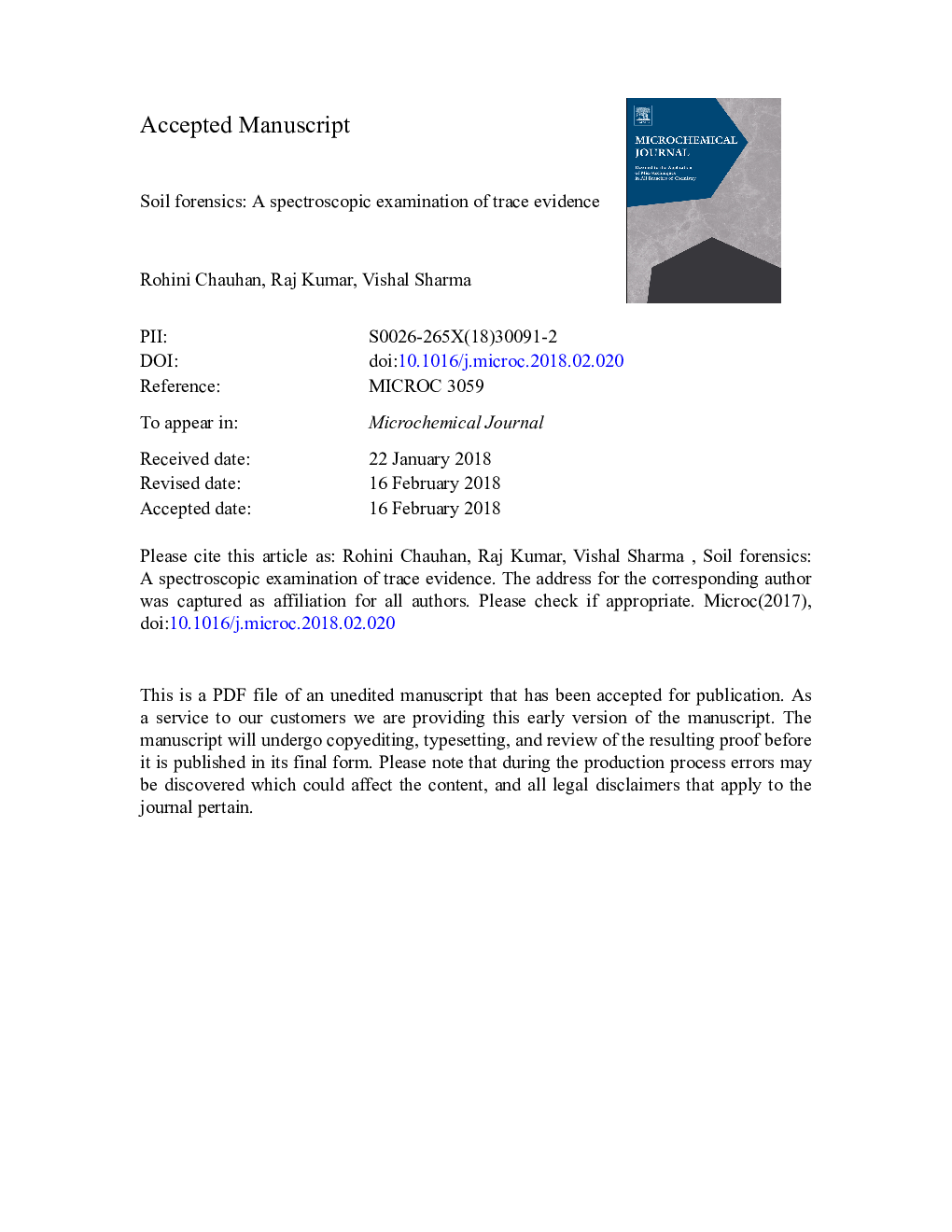| Article ID | Journal | Published Year | Pages | File Type |
|---|---|---|---|---|
| 7640653 | Microchemical Journal | 2018 | 42 Pages |
Abstract
Among various trace evidence, the soil is very crucial evidence because it can link the suspect with the crime and crime with its geographical region. Based on this hypothesis, the aim of present research is to characterize, differentiate and classify the soil samples collected from various geological regions of northwestern India via using attenuated total reflectance Fourier transform infrared (ATR-FTIR) spectroscopy combined with chemometrics. The organic and inorganic parts of surface and depth soil samples are successfully characterized. Sieving and heating of soil in a muffle furnace (650 °C) affect the spectral features considerably. The differentiation of soil samples is done by utilizing two approaches i.e. qualitative analysis and multivariate analysis. Both approaches provide a high discriminating power (i.e. qualitative analysis, surface = 99.35%, depth = 97.38%, and multivariate analysis, surface = 100%, depth = 100%). A classification model based on canonical discriminant function analysis is also built for grouping of soil to its particular geographical region. The developed model provides 100% correct classification of soil samples after the leave-one-out cross-validation. Therefore, the current study provides useful methods of soil analysis which can further be utilized by soil as well as forensic expert dealing with such cases.
Related Topics
Physical Sciences and Engineering
Chemistry
Analytical Chemistry
Authors
Rohini Chauhan, Raj Kumar, Vishal Sharma,
